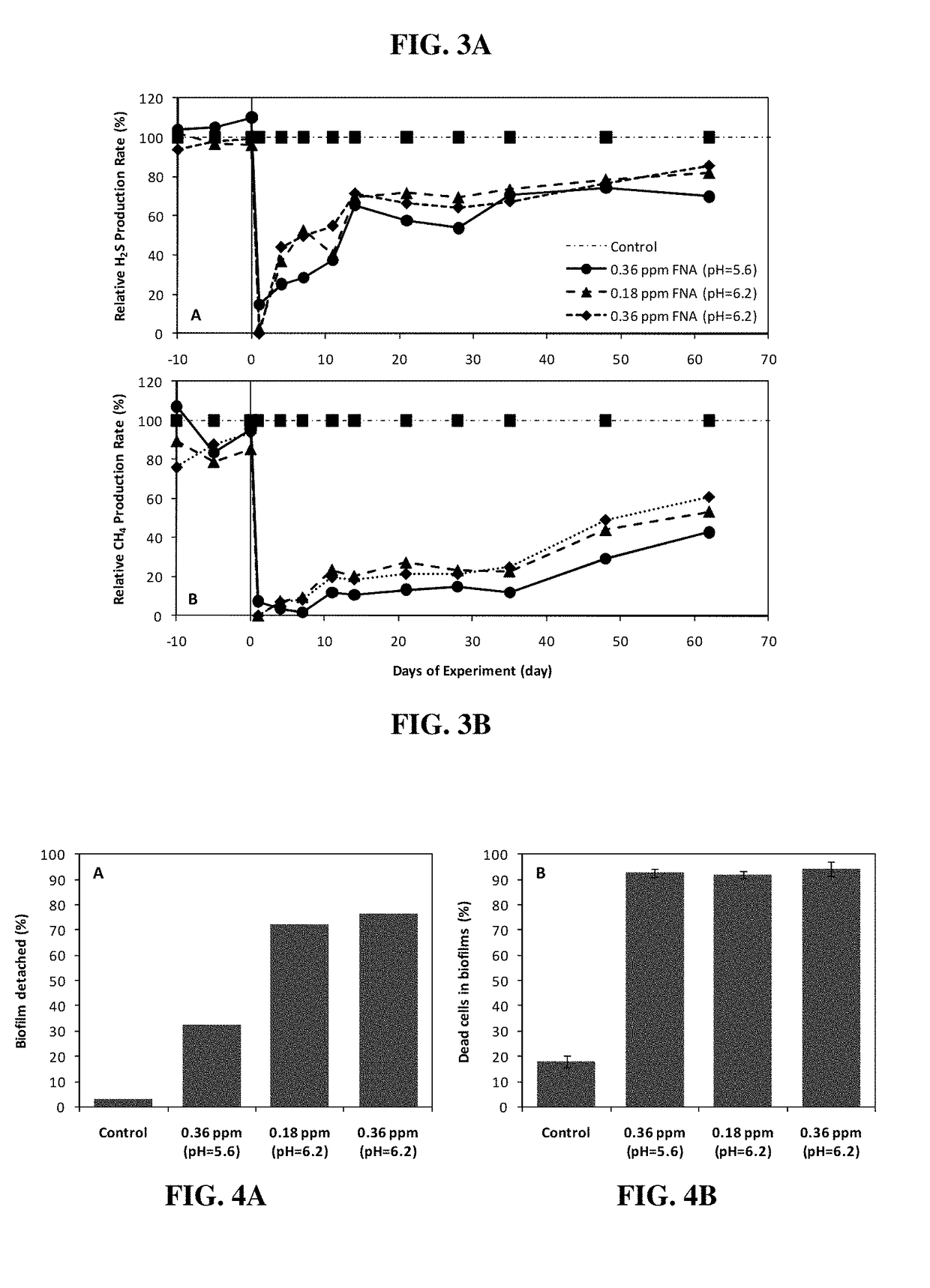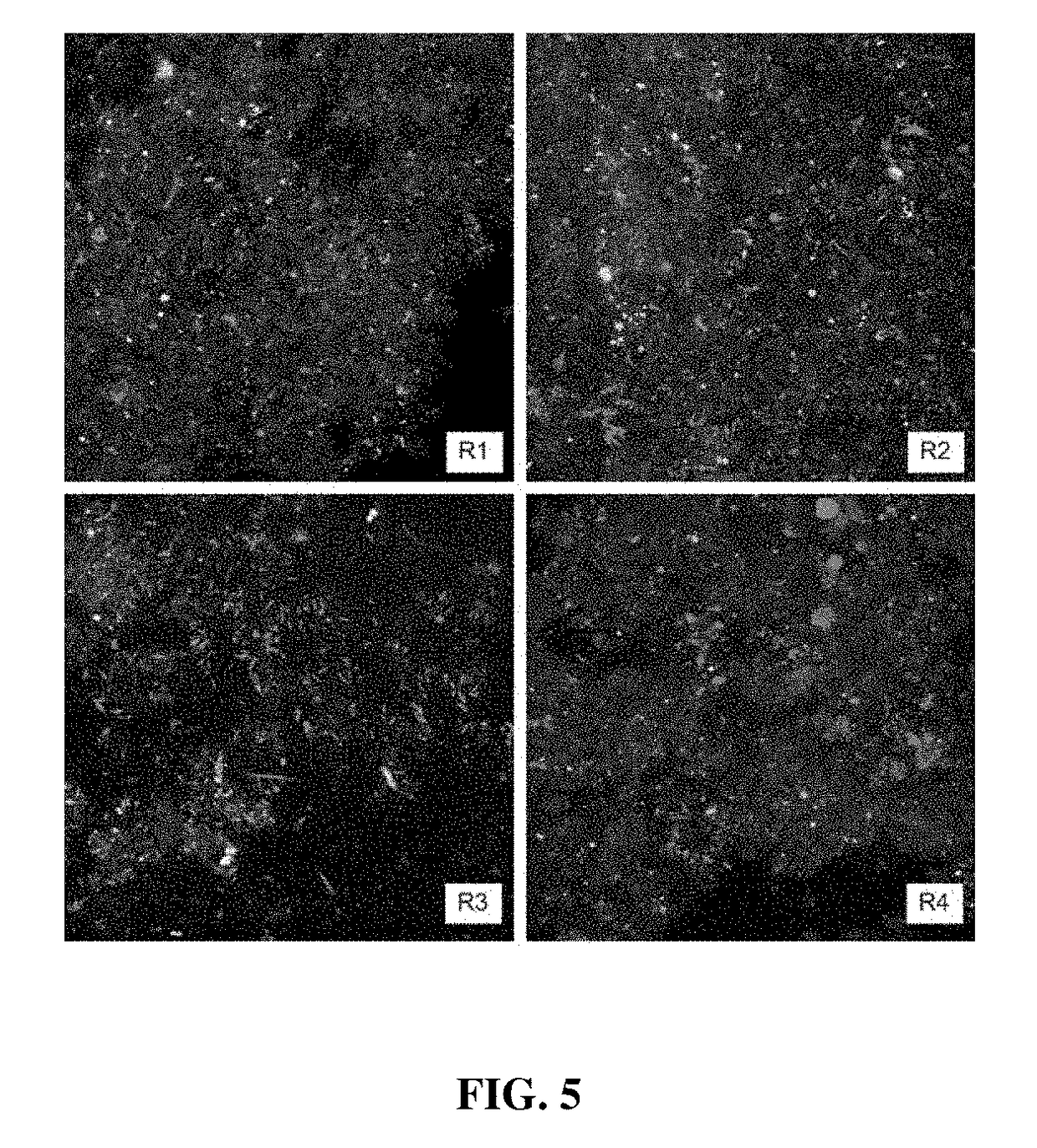Control of bacterial activity, such as in sewers and wastewater treatment systems
a technology for wastewater treatment systems and sewers, applied in water/sewage treatment by oxidation, water treatment parameter control, biocide, etc., can solve the problems of bacterial activity in sewer networks and other wastewater treatment systems that are considered unfavourable, affecting the efficiency of wastewater treatment, etc., to achieve enhanced kill rate, widen gap or time duration, and reduce the effect of bacterial activity
- Summary
- Abstract
- Description
- Claims
- Application Information
AI Technical Summary
Benefits of technology
Problems solved by technology
Method used
Image
Examples
experiment ii
[0047]Four groups of experiments were conducted to investigate nitrite and free nitrous acid (in the following discussion, FNA is used to denote free nitrous acid, SRB is used to denote sulfate reducing bacteria and MA is used to denote methanogenic archaea):[0048]Experiment I: Inhibitory effects of nitrite on SRB and MA (Mohanakrishnan et al., 2008). This constitutes a comparative example.[0049] Effects of FNA on SRB and MA—laboratory study with 6 hr FNA treatment[0050]Experiment III: Effects of FNA on SRB and MA—laboratory study with 24 hr FNA treatment[0051]Experiment IV: Effects of FNA on SRB and MA—field study with 33 hr FNA treatment (over three days; dosed during day time only).
[0052]The first experiment was mainly focused on nitrite while other experiments targeted on FNA. Experimental details are listed in Table 1 below.
[0053]In Experiment I, nitrite was continuously dosed in the reactor for 24 days. No sulfide and methane accumulation was observed in the reactor in the pre...
experiment iv
[0059] FIGS. 6A-6B show the sulfide and methane concentrations at the pumping station wet well and 828 m downstream. Complete suppression of sulfate reduction was achieved after three days, when the dosage was terminated. Sulfide production gradually recovered, reaching 50% of the initial level after 7 days. However, sulfide production dropped sharply during Days 12-14, reaching zero production on Day 14, before gradually bouncing back to the pre-nitrite dosage level three weeks after the termination of the dosage.
[0060]The strong toxic effect of FNA on methanogens observed in the lab-scale studies was confirmed in the field trial. One month after terminating nitrite dosage, methane concentration at 828 m remained at a level similar to that measured in the wet well, indicating that the sewer biofilm ceased to produce methane in this period. Three months after the dosage, methane production recovered to <20% of the pre-dosage level.
[0061]In general, the field trial confirmed the lab ...
PUM
| Property | Measurement | Unit |
|---|---|---|
| time | aaaaa | aaaaa |
| time | aaaaa | aaaaa |
| pH | aaaaa | aaaaa |
Abstract
Description
Claims
Application Information
 Login to View More
Login to View More - R&D
- Intellectual Property
- Life Sciences
- Materials
- Tech Scout
- Unparalleled Data Quality
- Higher Quality Content
- 60% Fewer Hallucinations
Browse by: Latest US Patents, China's latest patents, Technical Efficacy Thesaurus, Application Domain, Technology Topic, Popular Technical Reports.
© 2025 PatSnap. All rights reserved.Legal|Privacy policy|Modern Slavery Act Transparency Statement|Sitemap|About US| Contact US: help@patsnap.com



